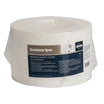Summer is here, and it's time to make a splash in your sparkling pool! However, to ensure that your pool remains pristine, proper maintenance is essential. Neglecting pool care can lead to a host of problems that can turn your world up-side-down. This comprehensive guide will walk you through a detailed summer pool maintenance checklist and provide solutions to common pool problems, ensuring you can enjoy a trouble-free swim season.
Summer Pool Maintenance Checklist:
- Regular Skimming and Scrubbing:
Frequency: Daily
Why: Debris such as leaves, insects, and dirt can accumulate on the surface and settle at the bottom of the pool, leading to algae growth and water contamination.
How: Use a long-handled net to skim the surface daily. Scrub the pool walls and floor weekly with a pool brush to prevent algae buildup.
- Maintain Water Levels:
Frequency: Weekly
Why: Water levels can drop due to evaporation, splashing, and backwashing. Low water levels can damage the pump and skimmer.
How: Use a garden hose to refill the pool to the midpoint of the skimmer opening.
- Check and Clean Filters:
Frequency: Bi-weekly
Why: Filters trap dirt, debris, and contaminants. A clogged filter reduces circulation and filtration efficiency.
How: Follow the manufacturer’s instructions to clean or backwash the filter. Replace the filter cartridge if necessary.
- Test and Balance Water Chemistry:
Frequency: Twice a week
Why: Balanced water prevents algae growth, protects pool equipment, and ensures safe swimming conditions.
How: Use a pool testing kit to check pH, chlorine, alkalinity, and calcium hardness levels. Adjust chemicals as needed to maintain the following levels:
- pH: 7.4 - 7.6
- Chlorine: 1.0 - 3.0 ppm
- Alkalinity: 80 - 120 ppm
- Calcium Hardness: 200 - 400 ppm
- Shock the Pool:
Frequency: Every 1-2 weeks or so
Why: Shocking, or super-chlorinating, the pool eliminates bacteria, algae, and organic contaminants that regular chlorination might miss.
How: Add a shock treatment according to the product instructions, preferably in the evening to prevent chlorine loss due to sunlight.
- Inspect Pool Equipment:
Frequency: Monthly
Why: Regular inspections help identify and fix potential issues before they become major problems.
How: Check the pump, heater, and other equipment for leaks, cracks, or unusual noises. Replace worn-out parts promptly.

Common Pool Problems & How to Fix Them:
Owning a pool also comes with its fair share of challenges. From cloudy water and algae blooms to malfunctioning pumps and leaks, common pool problems can quickly turn a backyard oasis into a frustrating ordeal. Understanding these issues and knowing how to address them can help ensure that your pool remains crystal-clear throughout the summer months. Here are some of the most frequent pool problems.
- Algae Growth:
Symptoms: Green, black, or yellow discoloration of water and pool surfaces.
Causes: Imbalanced water chemistry, poor circulation, insufficient chlorine levels.
Solution: Brush the affected areas, vacuum the pool, and shock it. Use an algaecide for persistent algae. Maintain proper chlorine and pH levels.
- Cloudy Water:
Symptoms: Milky or hazy water.
Causes: Poor filtration, imbalanced water chemistry, high bather load.
Solution: Check and clean the filter. Test and balance water chemistry, focusing on pH and chlorine levels. Shock the pool and use a clarifier if necessary.
- Chlorine Odor and Skin Irritation:
Symptoms: Strong chlorine smell, red eyes, itchy skin.
Causes: High combined chlorine levels due to inadequate sanitation.
Solution: Shock the pool to break down chloramines. Ensure proper ventilation if using an indoor pool. Maintain free chlorine levels between 1.0-3.0 ppm.
- Staining:
Symptoms: Discoloration on pool surfaces, typically brown, black, or green.
Causes: Metal ions in water, organic debris, imbalanced water chemistry.
Solution: Identify the source of staining. Use a metal sequestrant for metal stains, or a stain remover for organic stains. Regularly clean and balance water chemistry.
- Low Water Level:
Symptoms: Water below the skimmer line.
Causes: Evaporation, leaks, splashing.
Solution: Refill the pool to the proper level. Inspect for leaks and repair them. Consider using a pool cover to reduce evaporation.
- High Water Level:
Symptoms: Water above the skimmer line, potential overflow.
Causes: Heavy rainfall, overfilling.
Solution: Drain excess water using a submersible pump or pool filter system. Regularly monitor and adjust water levels.
- Foamy Water:
Symptoms: Excessive foam on the water surface.
Causes: High levels of dissolved organic compounds, improper chemical balance.
Solution: Reduce bather load and use a defoamer. Test and balance water chemistry, ensuring proper sanitizer levels.
By following this summer pool maintenance checklist and addressing common pool problems promptly, you can ensure your pool remains a clean, safe, and inviting place for family and friends. Regular maintenance not only extends the life of your pool but also enhances your overall swimming experience.
Schedule your pool services with Main Street Pools. Contact us today!
Phone: 905-862-4040
Email: info@mainstreetpools.com


















Leave a comment
All comments are moderated before being published.
This site is protected by hCaptcha and the hCaptcha Privacy Policy and Terms of Service apply.